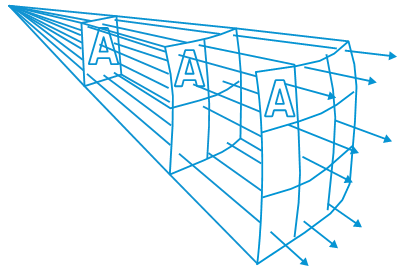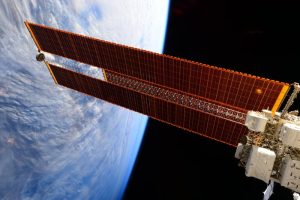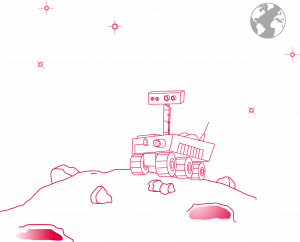Energía de la luz del sol - Impulsar la exploración espacial con energía solar
En este conjunto de actividades, los alumnos aprenderán dos conceptos que influyen en el diseño de los paneles solares para las misiones espaciales: la ley del cuadrado inverso y el ángulo de incidencia.
Los alumnos realizarán dos investigaciones sencillas utilizando una célula fotovoltaica (célula solar) y una fuente de luz.
En primer lugar, medirán cómo varía la potencia producida por las células solares con la distancia a la fuente de luz e intentarán recuperar la ley del cuadrado inverso para la intensidad de la luz de forma experimental.
A continuación, los alumnos realizarán un segundo experimento para investigar la dependencia de la potencia de la célula solar con el ángulo de incidencia. Por último, aplicarán estos conceptos a misiones espaciales reales de la ESA.
Objetivos de aprendizaje
Rango de edad:
14 - 18 años
Tiempo
Preparación: 1 hora
Montaje del experimento: 20 minutos
Lección: 1 hora y 30 minutos
Montaje del experimento: 20 minutos
Lección: 1 hora y 30 minutos
Recurso disponible en:
Actividad 1: La ley del cuadrado inverso
En esta actividad práctica, los alumnos calcularán la potencia de un panel solar midiendo la corriente eléctrica y la diferencia de potencial eléctrico e intentarán recuperar la ley del cuadrado inverso a partir de sus mediciones experimentales.

Equipo
Actividad 2: El ángulo de incidencia
En esta actividad, los alumnos aprenderán la importancia del ángulo de incidencia y las ventajas de colocar las células solares de forma óptima. Mediante un experimento, medirán cómo influye el ángulo de incidencia en la producción de energía.
Equipo
Actividad 3: Exploración del espacio con energía solar
En esta actividad, los estudiantes practican el uso de la ley del cuadrado inverso aplicada a las misiones espaciales reales de la ESA. Los estudiantes descubrirán cómo las propiedades de la ley del cuadrado inverso afectan al tamaño de los paneles solares y cómo el ángulo de incidencia es de vital importancia para las misiones que se aventuran a acercarse al Sol.
Equipo
¿Lo sabías?
La Estación Espacial Internacional (ISS) se alimenta de paneles solares. La imagen de la derecha muestra algunos de los paneles solares de la ISS, que alberga hasta seis astronautas a la vez. Cuando la ISS orbita la Tierra, los paneles solares pueden girar para apuntar más directamente al Sol. Los paneles abarcan una superficie de 2.500 m³, lo que equivale a la mitad de un campo de fútbol.

Paneles solares en la ISS
Palabras clave:

Moon Rover - Construir un rover con energía solar
Breve descripción: En esta actividad, los alumnos compararán las ventajas e inconvenientes de las fuentes de energía renovables y de las no renovables y estudiarán circuitos eléctricos sencillos.

Brazo robótico - Conviértete en ingeniero espacial por un día
Breve descripción: En esta actividad, los alumnos aprenderán cómo funciona su brazo y construirán un brazo robótico inspirado en él. Los alumnos comprenderán las diferentes

Osos del Espacio - Experiencia de laboratorio con Tardígrados
Breve descripción: En este conjunto de actividades experimentales, los alumnos investigarán la capacidad de supervivencia de los tardígrados, también conocidos como osos de agua. Expondrán las condiciones



